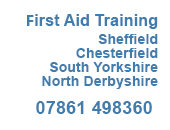Conflict Management
Conflict resolution is conceptualised as the methods and processes involved in facilitating the peaceful ending of conflict. There are many professions and vocations that individuals can be placed in a potential conflict situation that with the correct handling can be dealt with in a calm professional manner. On this course, you will learn how to identify that a situation could arise and how to deal with it to avoid conflict.
This course is aimed at anyone who can be placed in a potential conflict situation and you will learn how to defuse it safely and work towards a positive outcome.
You can do this as online training, remotely or face to face nationally.
What the course covers:
1. Know how communication can be used to solve problems and reduce the likelihood of conflict
1.1. State the importance of positive communication as a way of reducing the likelihood of conflict
1.2. Identify how managing customer expectations can reduce the likelihood of conflict
1.3. Identify the differences between assertiveness and aggression
1.4. State the importance of viewing a situation from the customer’s perspective
1.5. Identify strategies that can be used to solve problems
2. Know the factors that influence human responses in conflict situations
2.1. Identify human responses to emotional or threatening situations
2.2. Identify factors that can trigger an angry response in others
2.3. Identify factors that can inhibit an angry response in others
3. Know how to assess and reduce risks in conflict situations
3.1. Identify the stages of escalation in conflict situations
3.2. State how to apply dynamic risk assessment to a conflict situation
3.3. State the importance of following employer policies and guidance in conflict situations
3.4. Identify measures that can reduce risks for people who may be involved in conflict situations
4. Know how to communicate effectively and de-escalate the conflict in emotive situations
4.1. Identify how to use non-verbal communication in emotive situations
4.2. Identify how to overcome communication barriers in emotive situations
4.3. Identify ways of defusing emotive conflict situations
4.4. Identify how to work with colleagues to de-escalate conflict situations
4.5. State the importance of providing exit routes and space when dealing with an angry person
5. Know good practice to follow after conflict situations
5.1. State the importance of accessing help and support following an incident
5.2. Identify the benefits of reflecting on and learning from conflict situations
5.3. Identify the benefits of sharing good practice and contributing to solutions to recurring problems










